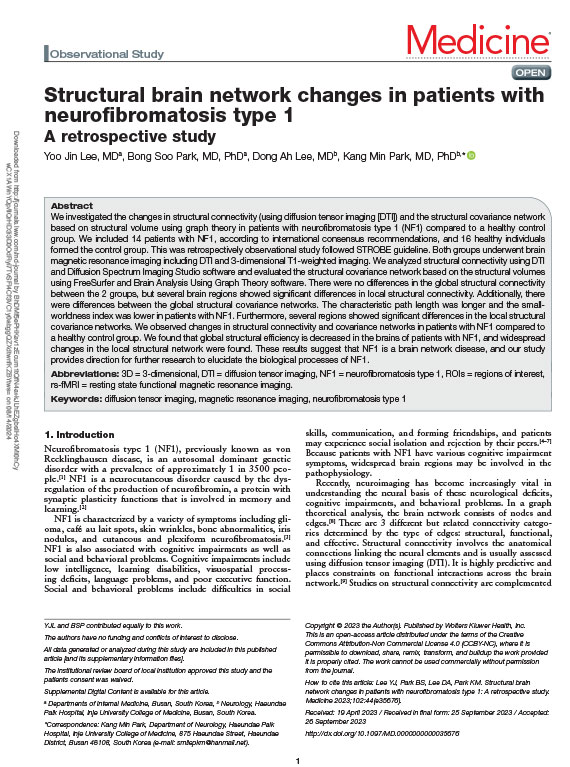Structural brain network changes in patients wit
November 2023
Abstract
We investigated the changes in structural connectivity (using diffusion tensor imaging [DTI]) and the structural covariance network based on structural volume using graph theory in patients with neurofibromatosis type 1 (NF1) compared to a healthy control group. We included 14 patients with NF1, according to international consensus recommendations, and 16 healthy individuals formed the control group. This was retrospectively observational study followed STROBE guideline. Both groups underwent brain magnetic resonance imaging including DTI and 3-dimensional T1-weighted imaging. We analyzed structural connectivity using DTI and Diffusion Spectrum Imaging Studio software and evaluated the structural covariance network based on the structural volumes using FreeSurfer and Brain Analysis Using Graph Theory software. There were no differences in the global structural connectivity between the 2 groups, but several brain regions showed significant differences in local structural connectivity. Additionally, there were differences between the global structural covariance networks. The characteristic path length was longer and the small-worldness index was lower in patients with NF1. Furthermore, several regions showed significant differences in the local structural covariance networks. We observed changes in structural connectivity and covariance networks in patients with NF1 compared to a healthy control group. We found that global structural efficiency is decreased in the brains of patients with NF1, and widespread changes in the local structural network were found. These results suggest that NF1 is a brain network disease, and our study provides direction for further research to elucidate the biological processes of NF1.

